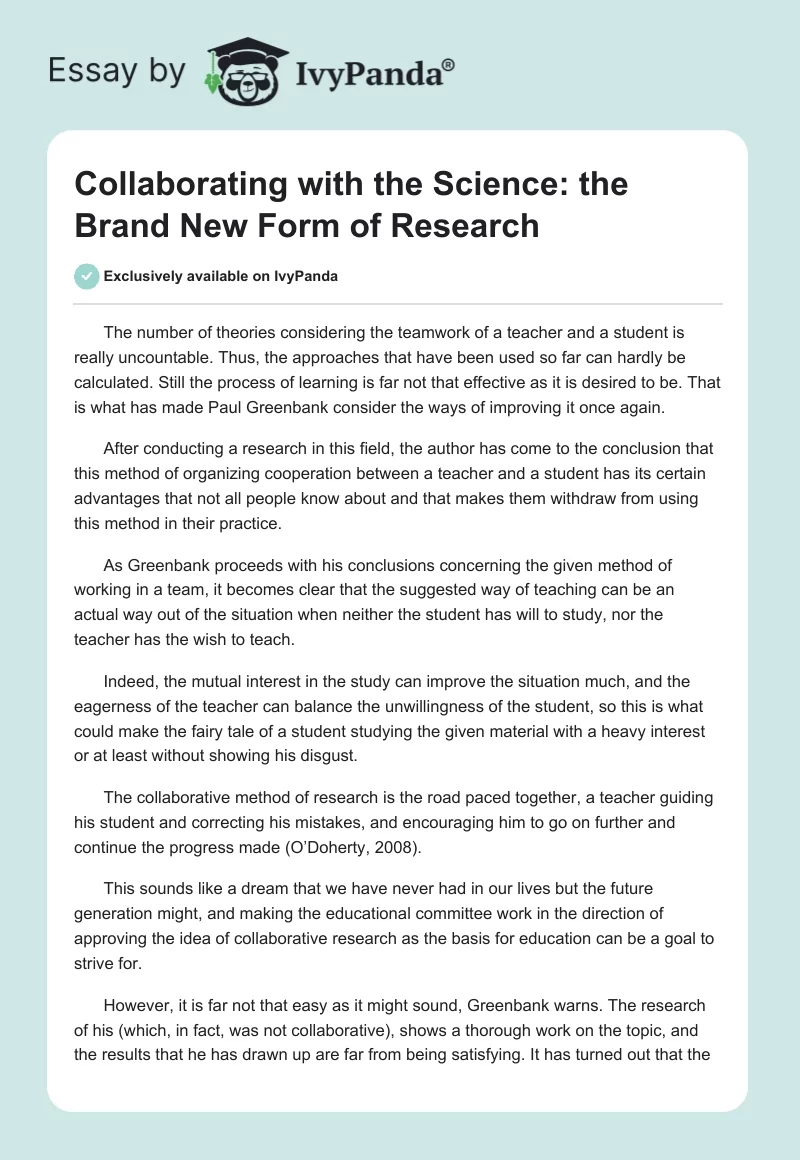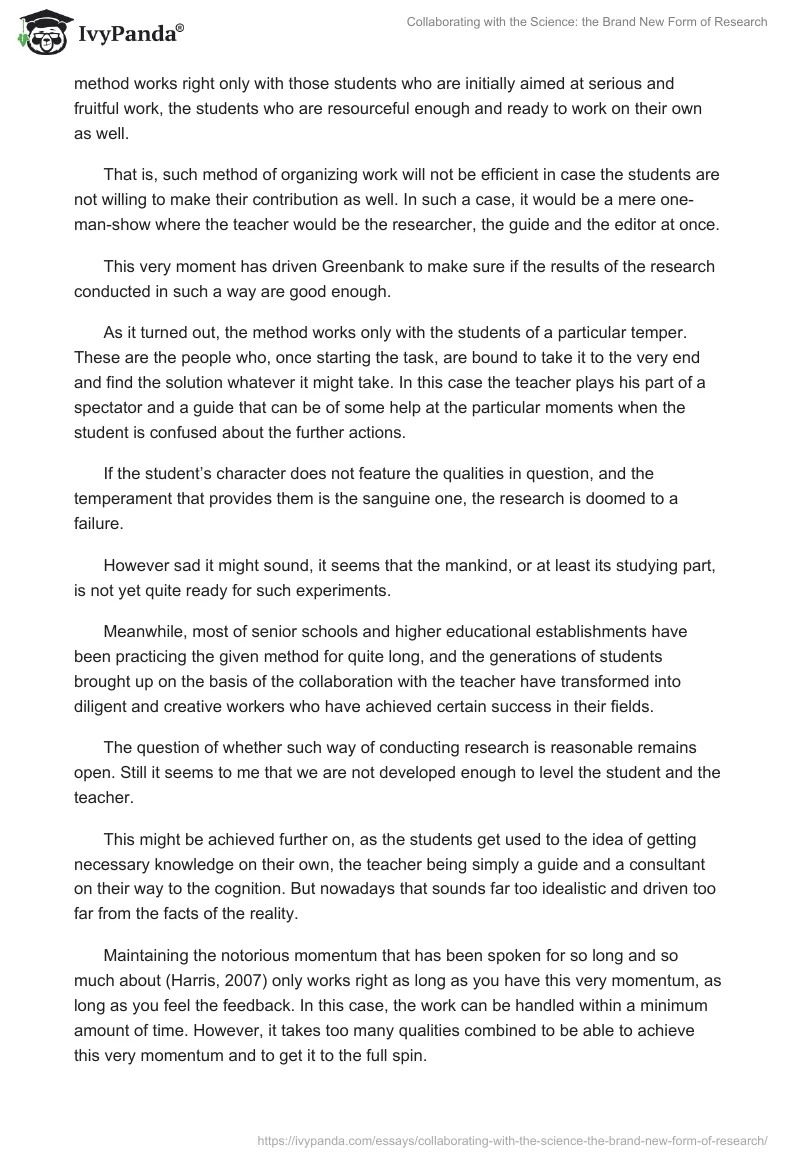The number of theories considering the teamwork of a teacher and a student is really uncountable. Thus, the approaches that have been used so far can hardly be calculated. Still the process of learning is far not that effective as it is desired to be. That is what has made Paul Greenbank consider the ways of improving it once again.
After conducting a research in this field, the author has come to the conclusion that this method of organizing cooperation between a teacher and a student has its certain advantages that not all people know about and that makes them withdraw from using this method in their practice.
As Greenbank proceeds with his conclusions concerning the given method of working in a team, it becomes clear that the suggested way of teaching can be an actual way out of the situation when neither the student has will to study, nor the teacher has the wish to teach.
Indeed, the mutual interest in the study can improve the situation much, and the eagerness of the teacher can balance the unwillingness of the student, so this is what could make the fairy tale of a student studying the given material with a heavy interest or at least without showing his disgust.
The collaborative method of research is the road paced together, a teacher guiding his student and correcting his mistakes, and encouraging him to go on further and continue the progress made (O’Doherty, 2008).
This sounds like a dream that we have never had in our lives but the future generation might, and making the educational committee work in the direction of approving the idea of collaborative research as the basis for education can be a goal to strive for.
However, it is far not that easy as it might sound, Greenbank warns. The research of his (which, in fact, was not collaborative), shows a thorough work on the topic, and the results that he has drawn up are far from being satisfying. It has turned out that the method works right only with those students who are initially aimed at serious and fruitful work, the students who are resourceful enough and ready to work on their own as well.
That is, such method of organizing work will not be efficient in case the students are not willing to make their contribution as well. In such a case, it would be a mere one-man-show where the teacher would be the researcher, the guide and the editor at once.
This very moment has driven Greenbank to make sure if the results of the research conducted in such a way are good enough.
As it turned out, the method works only with the students of a particular temper. These are the people who, once starting the task, are bound to take it to the very end and find the solution whatever it might take. In this case the teacher plays his part of a spectator and a guide that can be of some help at the particular moments when the student is confused about the further actions.
If the student’s character does not feature the qualities in question, and the temperament that provides them is the sanguine one, the research is doomed to a failure.
However sad it might sound, it seems that the mankind, or at least its studying part, is not yet quite ready for such experiments.
Meanwhile, most of senior schools and higher educational establishments have been practicing the given method for quite long, and the generations of students brought up on the basis of the collaboration with the teacher have transformed into diligent and creative workers who have achieved certain success in their fields.
The question of whether such way of conducting research is reasonable remains open. Still it seems to me that we are not developed enough to level the student and the teacher.
This might be achieved further on, as the students get used to the idea of getting necessary knowledge on their own, the teacher being simply a guide and a consultant on their way to the cognition. But nowadays that sounds far too idealistic and driven too far from the facts of the reality.
Maintaining the notorious momentum that has been spoken for so long and so much about (Harris, 2007) only works right as long as you have this very momentum, as long as you feel the feedback. In this case, the work can be handled within a minimum amount of time. However, it takes too many qualities combined to be able to achieve this very momentum and to get it to the full spin.
Just consider the following: to be able to work on this very level a student must be organized, creative (the given two already pose a contradiction to each other!) and resourceful. The student must be able to concentrate on the subject as fully as the teacher does, moreover, he has to be just indulged into the process as the teacher is, otherwise it would be a mutual torment.
To sum up, Paul Greenbank has the point discussing the drawbacks of the new method of conducting researches. It might look like a good idea for teachers, but the students might simply not be ready to address to the teacher as to a peer in a research.
However, the possible way out could be not changing the structure of education, but trying to bring up a child so that he or she could possess the wanted qualities. Being resourceful and responsible is not reaching for the stars, actually. The idea is that we still have a long way to go to improve our selves and change our ways of cognizing the world.
Reference List
Harris, T. (2007) Collaborative Research and Development Projects. Heidelberg, Berlin: Spindler Verlag. Print.
O’Doherty, E. (2008) Education in a Changing Environment: Conference Book. Vol.4. New York, NY: Informing Science. Print


